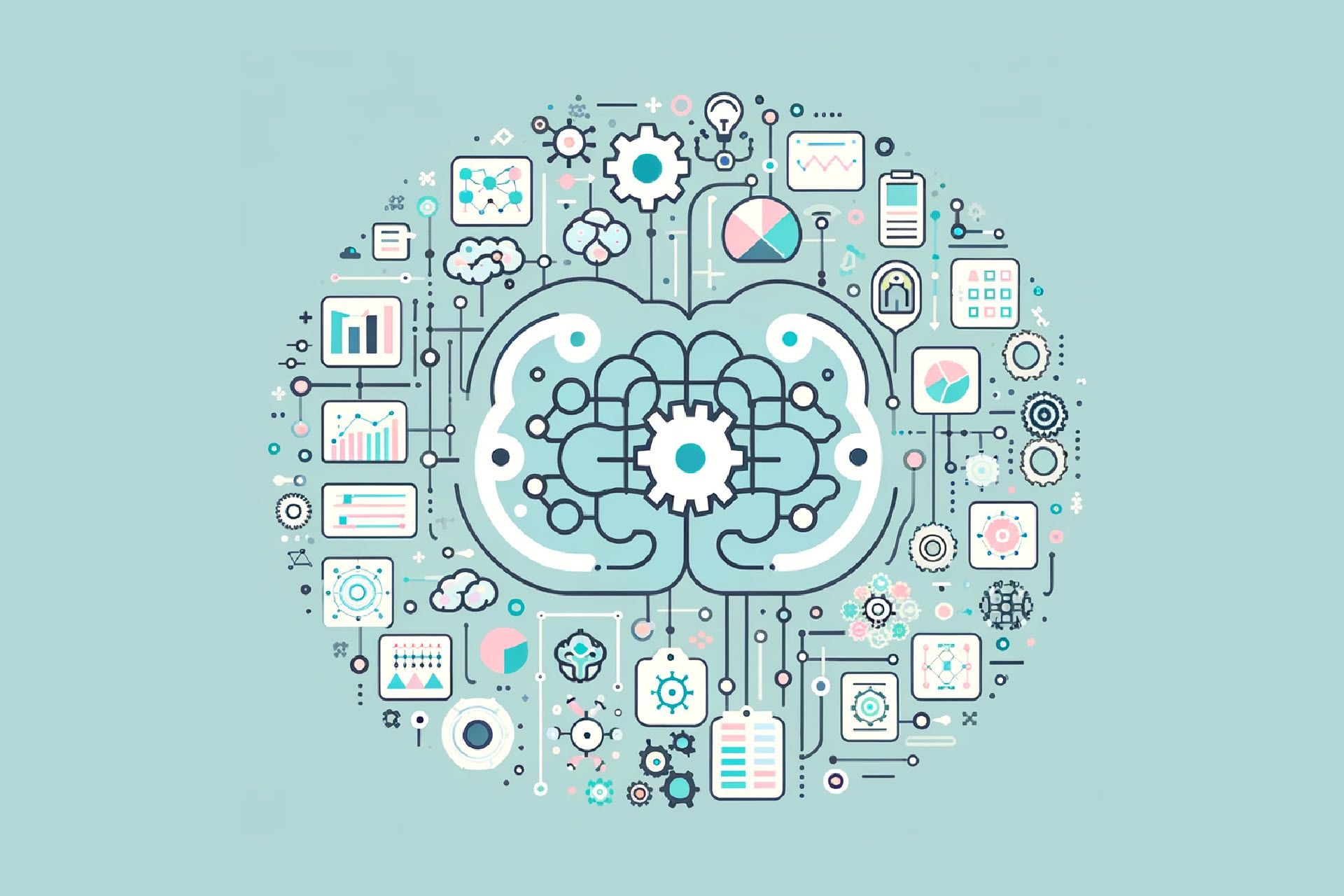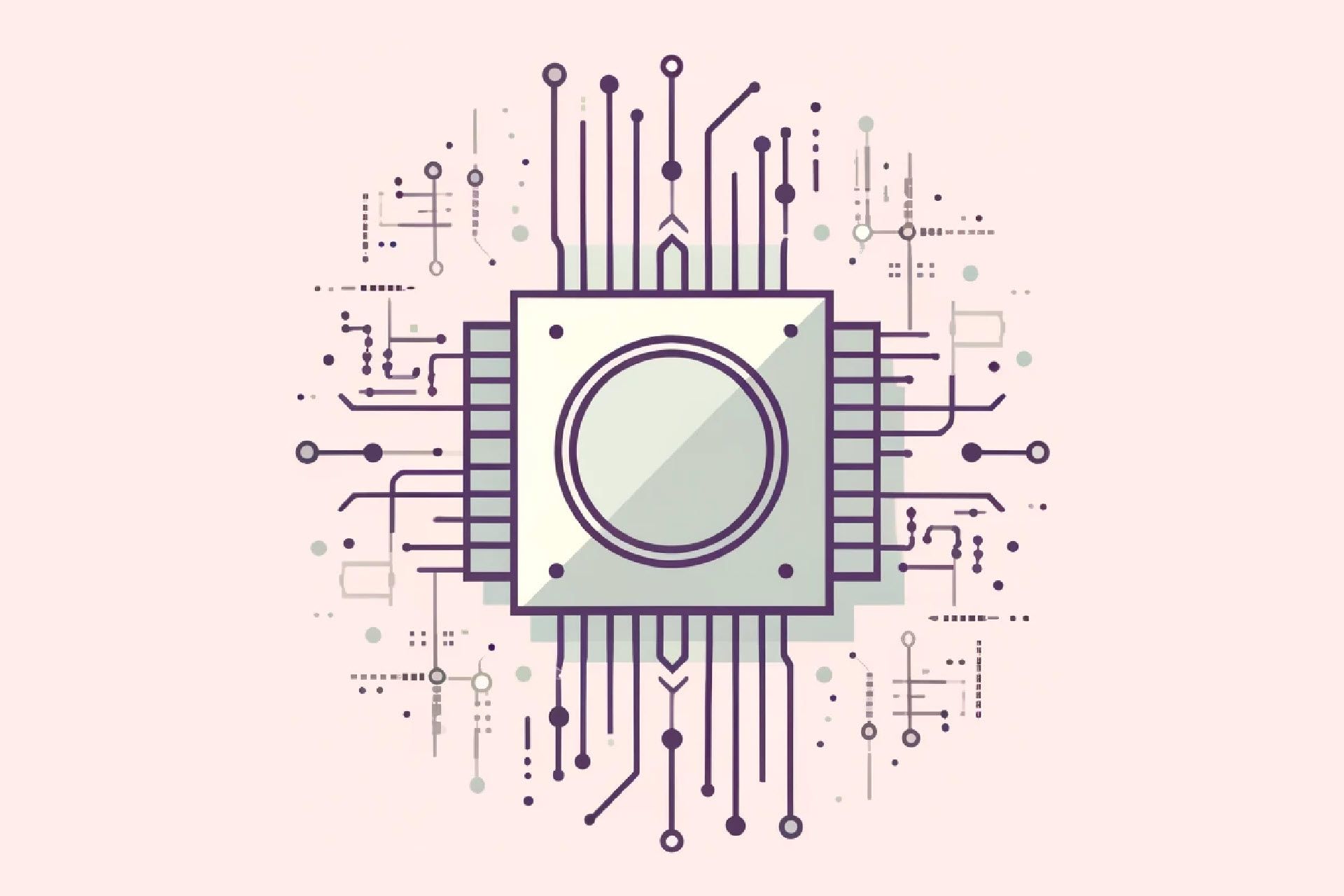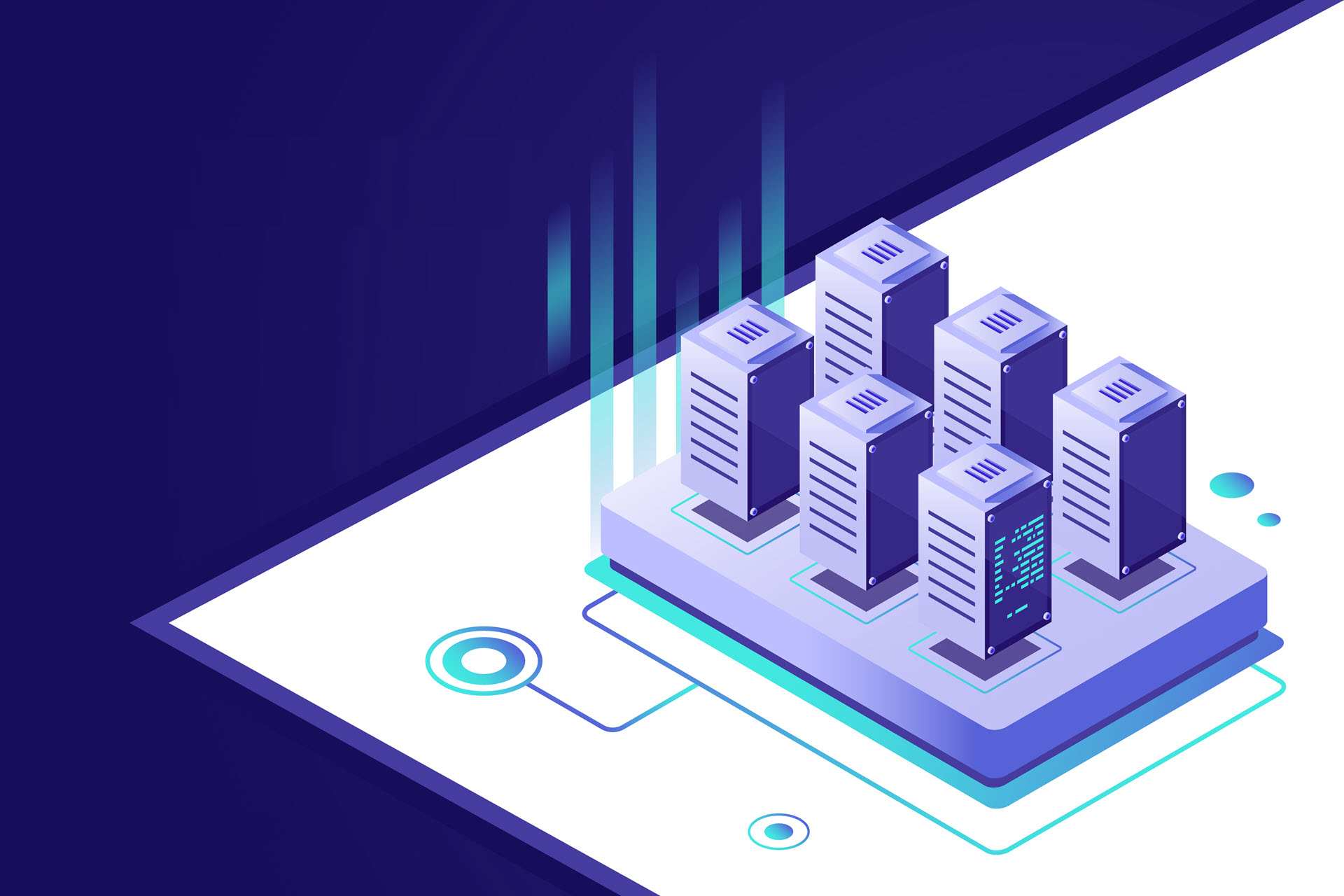Artificial intelligence (AI) technologies enable us to develop computer systems that mimic human cognitive functions like learning, reasoning, and problem-solving. Thanks to AI, we can create systems that automate complex tasks and solve problems that are beyond the capabilities of traditional computing approaches.
This article provides an overview of every major artificial intelligence technology business leaders must be familiar with. Read on to discover how you can use these cutting-edge technologies to streamline and accelerate your organization's workflows.
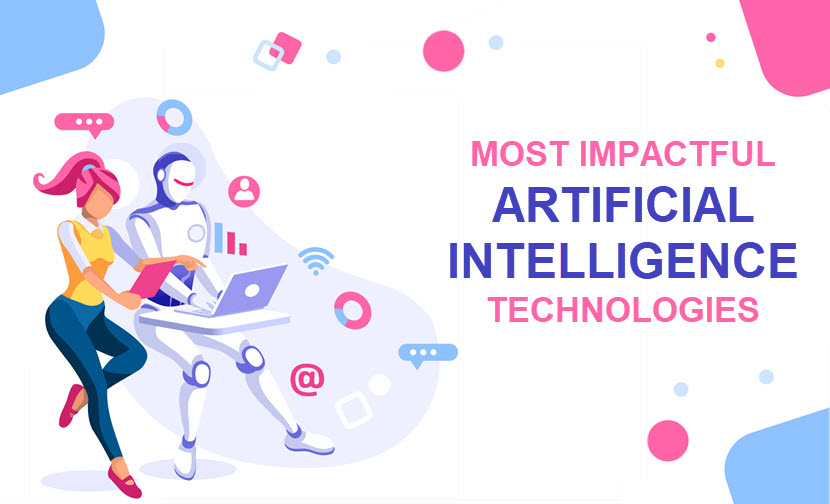
Want to start using artificial intelligence at your company? Our article on the use of AI in business offers a handy overview of the most common ways different teams use AI to improve and speed up work.
What Is Artificial Intelligence Technology?
Artificial intelligence technology is an umbrella term for various methodologies that enable computer systems to perform tasks that typically require human intelligence. The goal of AI technologies is to create systems that can autonomously:
- Analyze previously unseen information.
- Adapt to new situations.
- Perform tasks without explicit human intervention.
At their core, AI technologies involve the development of algorithms capable of processing input data, executing computations on provided inputs, and producing outputs that reflect intelligent behavior.
Most AI technologies rely on the principles of learning that allow systems to evolve and improve as they are exposed to more data. This learning capability is achieved through:
- Iterative training.
- Feedback mechanisms.
- The optimization of performance based on predefined objectives set by human admins.
AI technologies are rapidly evolving and have a wide range of applications across various industries. These technologies enhance efficiency and create new capabilities that challenge conventional business methods in most sectors.
Our article on artificial intelligence examples provides an in-depth look at the most popular uses of AI across all major industries.
What Are the Examples of Artificial Intelligence Technology?
Below is a close look at the main capabilities and applications of every major artificial intelligence technology. Jump in to see which one would have the biggest impact on your day-to-day workflows and processes.
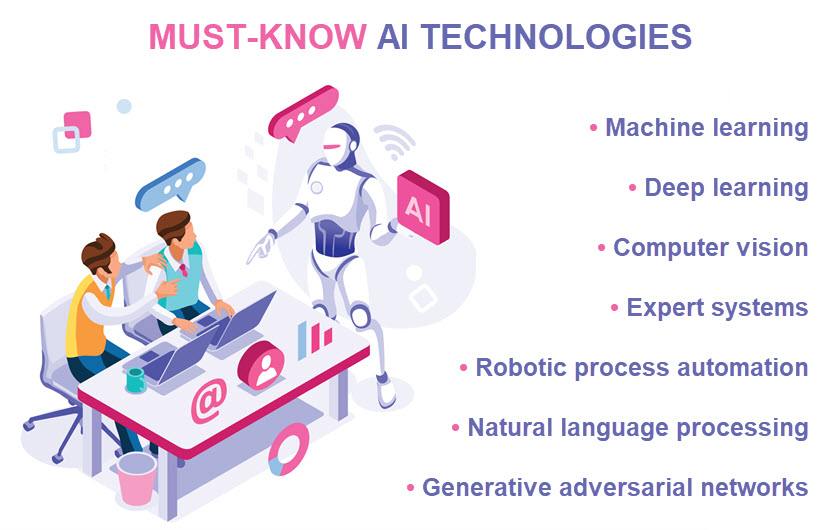
Machine Learning (ML)
Machine learning focuses on developing algorithms that allow computers to learn from provided inputs and make data-based decisions. Instead of being explicitly programmed to perform a task, ML models independently identify patterns in data and make decisions or predictions without direct guidance.
There are three main machine learning methodologies:
- Supervised learning. In supervised learning, admins train the ML model on a labeled data set, which means that each training example is paired with a corresponding output label. For example, a labeled data set of medical images would have a preset output for every image that states whether the input picture contains signs of illness.
- Unsupervised learning. In unsupervised learning, the ML model is trained on unlabeled data. The model must autonomously identify patterns and relationships within the provided data without using labels for guidance.
- Reinforcement learning. This ML type allows the model to interact with an environment and gather immediate feedback. The model takes action, checks the resulting environment state, and learns from observed outcomes. This process continues iteratively as the model learns from experience and refines its decision-making.
Many ML adopters opt for the so-called semi-supervised learning route. In this type of training, admins combine small volumes of labeled data with a large amount of unlabeled training data. Semi-supervised learning is an excellent way to improve learning accuracy when labeling the entire data set is too expensive or time-consuming.
Here are the most common uses for trained ML models:
- Credit scoring.
- Medical image analysis.
- Fraud detection.
- Predictive analytics for patient outcomes.
- Recommendation systems for e-commerce and entertainment platforms.
- Customer segmentation.
- Behavior analysis.
- Predictive equipment maintenance.
- Quality control during manufacturing.
- Stock market predictions.
- Weather forecasting.
Our supervised vs. unsupervised machine learning article provides a head-to-head comparison of the two primary ML methodologies.
Deep Learning
Deep learning is a subset of machine learning that focuses on using deep neural networks to detect and understand complex patterns in large data sets. A typical deep learning network consists of multiple layers of interconnected neurons. There are three types of layers in every deep learning network:
- Input layers that receive raw data.
- Hidden layers that perform transformations and computations on the input data.
- Output layers that produce the network's final prediction or classification.
While every deep learning network has one input and one output layer, the number of hidden layers ranges from two to tens of thousands. Each hidden layer is connected only to the neurons in the previous and subsequent layers.
Deep learning requires significant computational power. This artificial intelligence technology often requires the use of specialized hardware like GPUs and TPUs. High performance computing (HPC) infrastructure is also a common choice for running deep learning workloads.
Deep learning also requires high volumes of quality data during training. Adopters often use techniques like image rotation, flipping, and scaling to artificially increase the size of the training data set.
Check out these 10 deep learning frameworks that enable you to drastically speed up the training of deep learning networks.
Natural Language Processing (NLP)
Natural language processing is an AI technology that focuses on interactions between computers and humans through natural language. NLP enables computers to understand, interpret, and generate human language in a meaningful and helpful way.
NLP combines computational linguistics, computer science, and artificial intelligence to process and analyze large amounts of natural language data. There are five main concepts in NLP:
- Tokenization. This process involves breaking down text into smaller units (tokens), such as words, subwords, or characters.
- Part-of-speech tagging. This process involves identifying the part of speech for each token in a sentence (e.g., noun, verb, adjective).
- Named entity recognition (NER). This process involves identifying and classifying text entities into predefined categories (e.g., names, organizations, locations, dates).
- Syntax parsing. This process involves analyzing the grammatical structure of a sentence to understand the relationship between words.
- Sentiment analysis. This process involves determining a piece of text's emotional tone. The sentiment can be positive, negative, or neutral.
Here are the most common applications of natural language processing:
- Virtual assistants like Siri, Alexa, and Google Assistant that understand and respond to user queries.
- Automated customer service chatbots that handle inquiries and provide support through text or voice.
- Sentiment analysis tools that analyze social media posts, reviews, and feedback to gauge public opinions.
- Translation tools that provide real-time translation of text and speech between multiple languages.
- Summarization tools that create concise summaries of large documents.
- Speech-to-text applications that convert spoken language into written text for transcription or documentation purposes.
NLP relies on various techniques and algorithms, such as bag-of-words, TF-IDF, word embeddings, and recurrent neural networks (RNNs).
Computer Vision
Computer vision is a field of artificial intelligence that focuses on enabling machines to interpret visual information from their physical surroundings. These systems analyze images and videos to extract meaningful information and perform tasks such as:
- Object recognition.
- Image classification.
- Scene understanding.
At its core, computer vision involves two steps: image segmentation and feature extraction. During image segmentation, the system divides an image into segments to simplify analysis. Then, feature extraction identifies important features or patterns in image segments, after which the system takes action or makes decisions if it detects noteworthy features.
Applications of computer vision span various industries, including:
- Healthcare (e.g., analyzing medical images or tissue samples).
- Autonomous vehicles (e.g., detecting objects or pedestrians on the road).
- Retail (e.g., visual search and shelf inventory management).
- Security (e.g., face recognition and anomaly detection).
Most computer vision systems rely on convolutional neural networks (CNNs) designed to process grid-like data, such as images.
Robotic Process Automation (RPA)
Robotic process automation is an AI technology that enables the automation of repetitive, rule-based tasks. RPA software robots, also known as bots or virtual workers, mimic human interactions with digital systems to execute tasks like:
- Data entries.
- Data extraction.
- Form filling.
- Document processing.
RPA bots interact with digital systems through user interfaces, mimicking human actions such as mouse clicks, keystrokes, and data entries. Bots do not require connections via APIs to access data and perform actions, so you can use RPA without extensive integrations or system alterations.
There are three different types of RPA bots:
- Attended RPA. These virtual workers work alongside humans and are triggered only by user action.
- Unattended RPA. These bots operate independently from humans and require no manual intervention.
- Hybrid RPA. These virtual workers are a combination of attended and unattended bots, so they can work autonomously when allowed by the user.
RPA automates repetitive processes by following predefined sequences of steps. This capability allows organizations to streamline workflows and reduce the likelihood of errors. Here are the most common applications of robotic process automation:
- Automating invoice processing, reconciliations, and financial reporting.
- Streamlining employee onboarding, payroll processing, leave management, and compliance reporting.
- Automating order processing, ticket routing, customer inquiries, and complaint resolution.
- Optimizing order fulfillment, inventory management, shipment tracking, and supplier management.
- Automating patient scheduling, claims processing, medical record management, and billing.
Leveraging RPA enables businesses to drive greater efficiency, reduce costs, and improve productivity. Additionally, integrating RPA with other artificial intelligence technologies like NLP and ML enables more advanced automation capabilities.
Expert Systems
Expert systems are a type of artificial intelligence technology designed to mimic the decision-making abilities of human experts in specific fields. These systems are helpful for tasks that require problem-solving and decision-making based on domain-specific knowledge.
Expert systems utilize a knowledge base and an inference engine to provide advice and make decisions:
- The knowledge base contains domain-specific information, rules, and facts acquired from human experts. This base serves as the foundation for the system's decision-making process.
- The inference engine is the reasoning component of the expert system responsible for applying rules and logic from the knowledge base. The engine derives conclusions, makes inferences, and provides recommendations on a case-by-case basis.
Expert systems are designed to answer questions, diagnose problems, and provide recommendations based on the available knowledge and preset rules.
Users interact with expert systems via text-based or graphical interfaces that allow them to input queries, receive responses, and provide feedback. Most expert systems have an explanation facility that helps users understand exactly how the system arrived at a particular conclusion.
Generative Adversarial Networks (GANs)
Generative adversarial networks consist of two neural networks: the generator and the discriminator. The two networks are trained simultaneously through a competitive process:
- The generator network takes real data as input and creates synthetic data samples (images, video, text, sounds, etc.). Generators attempt to produce artificial data that is indistinguishable from real data.
- The discriminator network attempts to distinguish between real data samples and fake samples produced by the generator.
During training, the generator aims to fool the discriminator into classifying artificial samples as real data. Meanwhile, the discriminator aims to better distinguish real from fake data. This adversarial process enables the generator to become excellent at creating samples that are up to the standard of the original data.
GANs have numerous applications across various domains, including:
- Image generation and enhancement. GANs excel at generating high-quality images. Many adopters use these networks for image synthesis and style transfers.
- Video generation. GANs can generate realistic video sequences by extending their capabilities from static images to temporal data.
- Data augmentation. GANs can generate synthetic data to augment training data sets for ML models. This capability is vital in scenarios where collecting large amounts of training data is difficult, too expensive, or outright impossible.
- Image-to-image translation. A GAN can translate images from one domain to another, such as converting satellite images to maps, black-and-white photos to color, or sketches to photorealistic images.
- Text-to-image synthesis. GANs can generate images from textual descriptions. This capability allows users to create images based solely on text-based input.
Our guide to neural networks provides an in-depth look at how neural nets use artificial neurons to process information, weigh options, and reach conclusions.
How Artificial Intelligence Technologies Work?
All AI technologies leverage algorithms to simulate human cognitive functions such as learning, problem-solving, perception, and decision-making. The goal of these algorithms varies widely depending on the AI technology:
- Machine learning algorithms learn patterns and relationships from data.
- NLP algorithms analyze and interpret human language.
- Expert systems use rules and logic to apply instructions from the knowledge base.
All AI technologies require some input they can process. This data can come from various sources, including sensors, online repositories, and user inputs. Input data can be structured (e.g., databases, spreadsheets) or unstructured (e.g., text, images, videos). The quality and quantity of available data often determine the performance and accuracy of AI systems.
In most use cases, the input data must go through some preprocessing before being fed into the model, which often involves processes like:
- Handling missing values.
- Cleaning data by removing noise.
- Normalizing data.
- Transforming data into a suitable format.
AI models know how to process inputs because they were trained on data in the same format. During training, the model learns patterns from the provided data. You feed the model with sample data, and the model adjusts its parameters until it starts arriving at optimal outputs. In most training scenarios, human admins decide when the model is sufficiently trained and ready for real-world deployment.
Once trained, the AI model can make predictions or decisions based on new, previously unseen data. This process is known as inference. The model processes input data through learned parameters and generates an output, which are either classifications, recommendations, or specific actions.
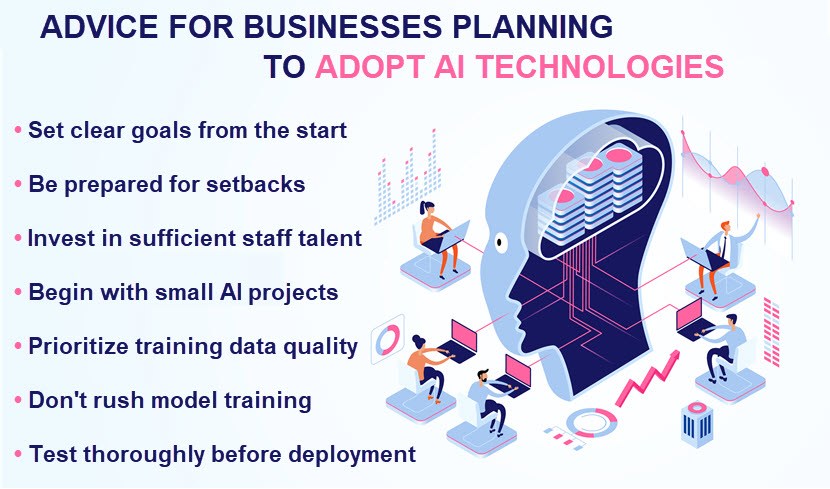
What Are Pros and Cons of AI Technologies?
Like all technologies, AI comes with both notable benefits and drawbacks. You must be aware of both the pros and cons before you start using any artificial intelligence technology.
AI Pros
AI technologies offer numerous advantages across various domains. Here are some of the main pros of using AI technologies:
- Automation of routine tasks. Artificial intelligence automates repetitive and mundane tasks, which leads to increased efficiency and productivity. While AI handles routine tasks, humans get to focus on more complex and creative duties.
- In-depth data analysis. AI can analyze large volumes of data quickly and accurately. This in-depth analysis often leads to the discovery of patterns and trends human analysts cannot identify.
- Better decision-making. AI provides data-based insights and recommendations that support decision-making processes. These insights help business leaders make informed decisions.
- Around-the-clock availability. AI systems can operate continuously without the need for breaks or off days. This 24/7 availability is vital for mission-critical tasks and customer service apps.
- Cost savings. AI technologies help businesses significantly reduce running costs by automating tasks and improving efficiency. The smart use of artificial intelligence technology also enables adopters to optimize resource utilization.
- Predictive capabilities. AI is excellent at predicting future trends and behaviors based on historical data. This capability is helpful in various business areas, such as market forecasting and preventive maintenance.
Want to capitalize on the benefits of AI technologies? Our Bare Metal Cloud servers enable you to run AI workloads on powerful Intel Max 1100 GPUs ideal for compute-hungry AI and ML models.
AI Cons
While highly beneficial, AI technologies come with several significant drawbacks and risks. Here are the most notable cons of AI you must know about:
- Data privacy concerns. The vast amounts of data required for training make AI models a prime target for cyber attacks. Preventing data breaches and the unauthorized use of personal information are common concerns for AI adopters.
- Lack of transparency. Many AI systems, particularly deep learning models, operate as "black boxes," which means it's difficult to understand how they arrive at conclusions. This lack of transparency is problematic for organizations that operate in highly regulated industries.
- Adversarial attacks. AI systems are vulnerable to adversarial attacks in which threat actors use malicious inputs to deceive the AI. These attacks significantly compromise the security and reliability of AI apps.
- Energy consumption. More powerful AI systems require substantial computational power, which leads to high energy consumption and carbon emissions.
- Errors and failures. AI systems are not infallible and can make mistakes when handling more complex tasks. Ensuring the reliability of AI systems, especially in critical use cases in areas like healthcare and autonomous driving, is a major challenge.
- Over-reliance on AI. Excessive dependence on AI systems degrades human skills and critical thinking. Employees can become overly reliant on AI, which reduces their ability to make independent decisions.
- High costs. Developing and deploying advanced AI systems is expensive. Smaller organizations with limited budgets often face a financial barrier when considering AI projects.
- Malicious misuse. AI technologies can be misused for malicious purposes. Threat actors are increasingly using AI to create convincing deepfake videos or perform social engineering attacks.
Our article on social engineering examples demonstrates how dangerous these relatively simple attacks are when companies are caught off-guard.
Where Is AI Used in Everyday Life?
While often operating behind the scenes, artificial intelligence technologies are already deeply embedded into various aspects of our lives. Here are a few examples of how and where we use AI in everyday life:
- Voice assistants. Voice-activated assistants like Apple's Siri, Google Assistant, Amazon's Alexa, and Microsoft's Cortana rely on AI to perform tasks and answer questions.
- Smart home devices. Many households rely on AI-enabled devices to control home automation systems. Common examples include smart thermostats, lighting, and security systems.
- Search engines. AI algorithms enhance search engines by improving search results through a better understanding of context, user intent, and relevance.
- Recommendation systems. Platforms like Netflix, Amazon, and YouTube use AI to recommend movies, products, and videos based on user preferences.
- Social media. Platforms like Facebook, Instagram, and X use AI to show posts, ads, and notifications based on user interests and previous interactions.
- E-commerce. Many e-retail websites use AI to offer personalized product recommendations and special offers to users.
- Healthcare uses. AI aids medical diagnostics by analyzing medical images, predicting patient outcomes, and identifying potential health issues. Healthcare providers are also increasingly using AI-powered virtual health assistants to provide off-site consultations.
- Fraud detection. Many financial institutions use AI to detect fraudulent transactions and unusual activity by analyzing data patterns and suspicious user behaviors.
- Navigation apps. AI improves navigation software by providing real-time traffic updates, optimal routes, and estimated arrival times.
- Customer service. Many businesses use AI-based chatbots and virtual agents to handle customer inquiries, provide support, and resolve simple issues.
Want to deploy AI workloads on in-house infrastructure? You'll need some top-tier hardware, so check out our reviews of the market's top AI processors.
Start Using AI to Speed Up and Improve Day-to-Day Operations
When implemented in the right way, AI technologies drive tangible improvements in efficiency and productivity. Use what you learned here to start identifying all the ways your organization can use AI to streamline operations and stay ahead of the competition.
